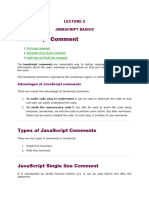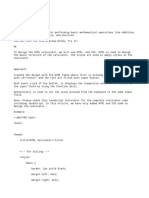0% found this document useful (0 votes)
9 views13 pagesUnit-II Notes Web Technology
Second Unit notes
Uploaded by
chaudhary03082000Copyright
© © All Rights Reserved
We take content rights seriously. If you suspect this is your content, claim it here.
Available Formats
Download as PDF, TXT or read online on Scribd
0% found this document useful (0 votes)
9 views13 pagesUnit-II Notes Web Technology
Second Unit notes
Uploaded by
chaudhary03082000Copyright
© © All Rights Reserved
We take content rights seriously. If you suspect this is your content, claim it here.
Available Formats
Download as PDF, TXT or read online on Scribd
/ 13
























































































